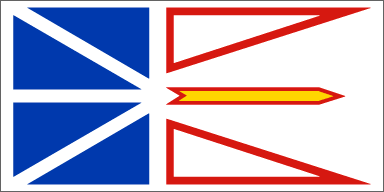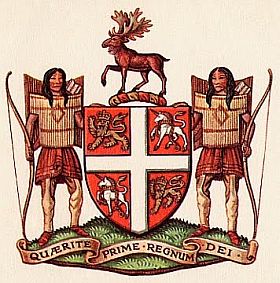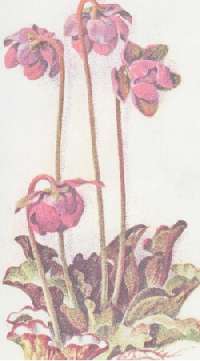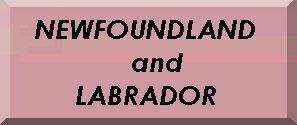- Newfoundland is one of the oldest places in Canada.
- In 1497 an explorer named John Cabot landed on the island.
- He arrived on the feast day of St. John the Baptist and first
called it St. John's Isle in honour of the saint.
- The name for this new land changed to "New Found Launde".
- Newfoundland became Canada's tenth province in 1949.

- This flag became the official flag of Newfoundland and Labrador in 1980.
- White represents the ice and snow.
- Blue is for the sea.
- Red is for human effort.
- Gold is for confidence.
- The yellow arrow represents confidence and hope for a bright future.
- The two red triangles represent the island and mainland of the province.
- Blue triangles stand for the province's dependence on fishing and the sea.
- The provincial flag represents the past, present and future.

THE COAT OF ARMS
- The shield has a white cross on a red background.
- Red and white are the colours of the Knights of St. John.
- The lions and unicorns on the shield represent England and Scotland.
- Aboriginal inhabitants (the Beothuk) stand on either side.
- An elk stands above the shield.
- The motto QUAERITE PRIME REGNUM DEI means "Seek ye first the Kingdom of God".

THE PITCHER PLANT
- The Pitcher Plant is an insect-eating plant.
- The plant is found in the wetlands and blooms in May and June.
- The name comes from the hollow tube-shaped leaves
which collect water and trap the insects.
- It became the official flower of the province in 1954.
OTHER SYMBOLS
- tree - Black Spruce (is on the Labrador flag)
- bird - Atlantic Puffin (also called a sea parrot)
- game bird - partridge (or ptarmigan)
- mineral - Labradorite (for decorating buildings, jewellery)
- animals - Newfoundland pony, Newfoundland dog
NEXT (New Brunswick)

EMBLEMS |
CANADA

Web Pages for Students
J.Giannetta 1999
(updated 2017)
jgiannet@hotmail.com
SOURCE: http://www.heritage.nf.ca/articles/society/arms-seals-and-emblems.php
|




